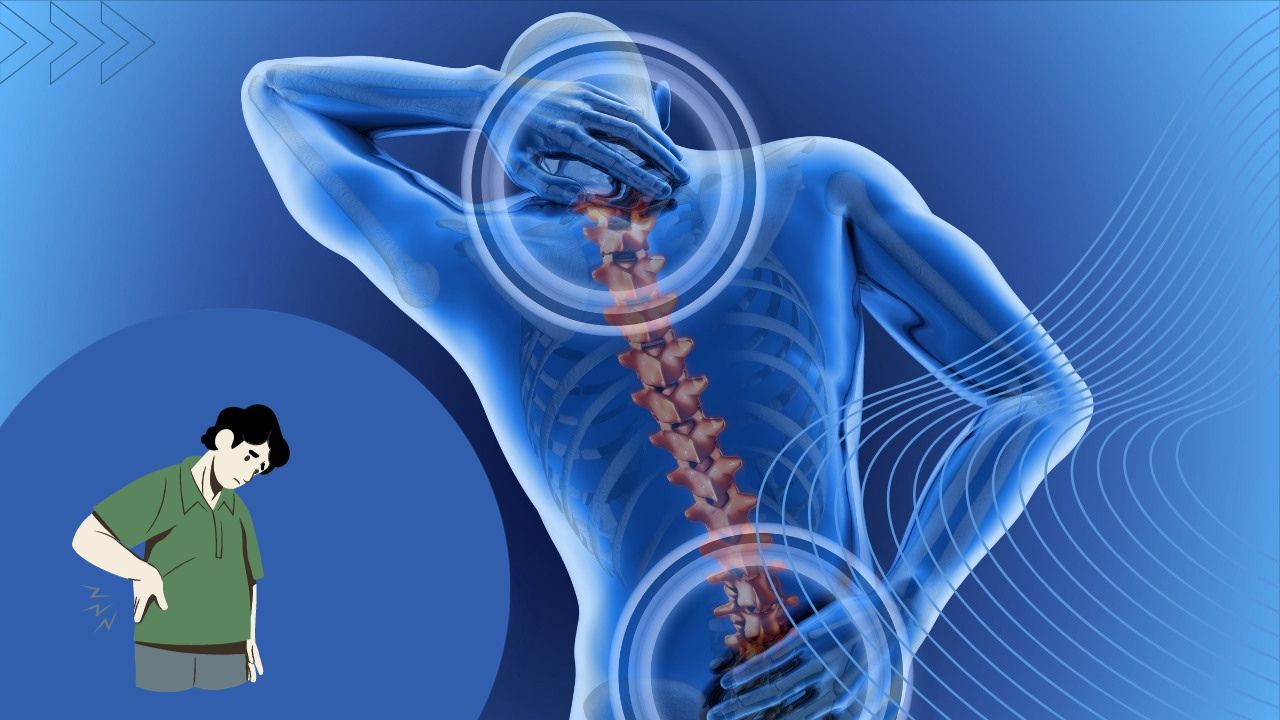Does Tailbone Pain Get Worse Over Time?
Understanding the intricacies of coccydynia's journey and the factors at play can empower you to write a happier ending.

Tailbone pain, also known as coccydynia, can be an uncomfortable and sometimes debilitating condition. The tailbone, or coccyx, is the small triangular bone at the bottom of your spine. While it is generally not the subject of much attention, pain in this area can be a serious issue for those who experience it. One common question that people often have is: Does tailbone pain get worse over time?
Let’s explore the causes of tailbone pain, whether it tends to worsen, and what you can do to manage or prevent it from becoming a chronic issue.
What Is Tailbone Pain?
Tailbone pain refers to discomfort or soreness in the coccyx, the small bone at the bottom of the spine. It can occur due to various factors, including injury, poor posture, or prolonged sitting. Tailbone pain can range from mild discomfort to intense, sharp pain, especially when sitting or standing after sitting for long periods.
Common Causes of Tailbone Pain
- Trauma or Injury
A fall onto the tailbone, a sports injury, or even prolonged sitting on hard surfaces can lead to bruising, fractures, or dislocation of the coccyx. Trauma is a leading cause of acute tailbone pain. - Prolonged Sitting or Poor Posture
Sitting for extended periods, especially on hard surfaces, can put excessive pressure on the coccyx, leading to inflammation and pain. Poor posture, such as slouching, can also aggravate the area. - Childbirth
During childbirth, the pressure from delivering a baby can cause injury or strain to the coccyx, especially for women who experience a difficult or prolonged delivery. - Coccygeal Ligament and Muscle Tension
Overuse or strain of the muscles and ligaments around the tailbone can cause tension, leading to pain. Conditions like piriformis syndrome, where the muscle near the coccyx becomes tight, can contribute to pain. - Infections or Tumors
Though rare, infections or tumors around the coccyx can lead to severe pain. If tailbone pain is accompanied by other unusual symptoms (fever, weight loss, etc.), medical attention is crucial.
Does Tailbone Pain Get Worse Over Time?
For many people, tailbone pain can improve with time, particularly if it’s related to a minor injury or temporary discomfort. However, for others, especially those who experience chronic coccydynia, the pain can worsen over time. Below are some factors that may contribute to tailbone pain worsening:
1. Chronic Conditions
Chronic tailbone pain often stems from repetitive injury or poor posture. If left untreated, muscle tightness and inflammation can become more pronounced, leading to more intense pain. Repeated pressure on the coccyx can also result in long-term damage or irritation to the area, making the pain worse over time.
2. Inadequate Treatment or Management
If tailbone pain is not properly managed, it can become more persistent and severe. Using improper cushions, continuing to sit for long periods without breaks, or ignoring posture issues can cause the condition to worsen. Lack of medical intervention for underlying causes, such as fractures or infections, can also prolong or escalate the pain.
3. Sedentary Lifestyle
A sedentary lifestyle can exacerbate tailbone pain. Sitting for long hours, especially in poor posture, puts constant pressure on the coccyx, preventing healing. The muscles supporting the coccyx may weaken, leading to instability and discomfort. Additionally, lack of movement can prevent blood flow to the area, prolonging recovery.
4. Underlying Health Issues
Conditions like arthritis or infections can worsen tailbone pain if not properly treated. For instance, arthritis can cause joint inflammation, which may affect the coccyx and lead to chronic pain. If an infection or tumor is present, the pain may intensify without proper medical intervention.
Can Tailbone Pain Improve or Get Better?
While tailbone pain can get worse over time in some cases, it is also important to note that many people experience relief, especially with proper treatment. If the pain is due to a mild injury or temporary condition, it can improve on its own with rest and proper self-care.
Here are some strategies to manage and potentially alleviate tailbone pain:
- Rest and Avoid Pressure Resting and avoiding sitting for prolonged periods can help reduce the pressure on the tailbone. If sitting is necessary, use a cushion or donut pillow to relieve pressure.
- Posture Correction Correcting your posture, especially when sitting, can alleviate pressure on the coccyx. Sit upright with proper back support to reduce strain on your tailbone.
- Pain Relief Methods Over-the-counter pain relievers like ibuprofen or acetaminophen can help reduce inflammation and pain. Cold and heat therapy can also be effective in managing discomfort.
- Physical Therapy Physical therapy focused on strengthening the muscles around the tailbone and improving posture can provide long-term relief. Stretching and strengthening exercises can alleviate muscle tension and improve the stability of the coccyx.
- Medical Treatment If the pain is severe or persistent, medical treatment may be necessary. This can include corticosteroid injections to reduce inflammation or, in rare cases, surgery to remove the coccyx if other treatments fail.
When to See a Doctor
If your tailbone pain is severe, persistent, or accompanied by other symptoms such as fever, unexplained weight loss, or difficulty moving, it’s important to consult with a healthcare provider. A doctor can evaluate the underlying cause of the pain and recommend the most appropriate treatment options.
Conclusion
Tailbone pain can worsen over time if not properly managed, especially for individuals with chronic conditions, poor posture, or repeated injuries. However, with appropriate treatment and lifestyle changes, many people can experience relief and prevent the pain from worsening. If you’re dealing with tailbone pain, it’s crucial to address the underlying causes and seek medical help if necessary. By taking proactive steps, you can manage the pain and improve your quality of life.

FAQs
Q: Does tailbone pain always get worse with time?
A: Not necessarily. Tailbone pain can vary from person to person. While some may experience improvement with time and self-care, others may find that the pain persists or worsens. It depends on the underlying cause and how well it responds to treatment.
Q: Can ignoring tailbone pain lead to worsening symptoms?
A: Ignoring tailbone pain may contribute to worsening symptoms, especially if the underlying issue is not addressed. It's crucial to identify the cause of the pain and take appropriate measures for relief, such as using cushions, adjusting sitting positions, or seeking medical advice.
Q: How does tailbone pain progress over time?
A: The progression of tailbone pain varies. It can improve gradually with self-care, physical therapy, or medical interventions. In some cases, without proper management, it may persist or worsen. Understanding the cause and adopting preventive measures can influence the progression.
Q: Are there lifestyle factors that can impact the worsening of tailbone pain?
A: Yes, lifestyle factors like prolonged sitting on hard surfaces, poor posture, or engaging in activities that strain the tailbone can contribute to the worsening of pain. Making adjustments, such as using supportive cushions and practicing good posture, can help alleviate symptoms.
Q: Can tailbone injuries from the past cause delayed worsening of pain?
A: Tailbone injuries, even from the past, can potentially cause delayed worsening of pain. Scar tissue or unresolved issues may lead to ongoing discomfort. Seeking medical advice for a comprehensive evaluation and targeted treatment is essential.
Q: What self-care measures can prevent tailbone pain from getting worse?
A: Self-care measures include using cushions, practicing good sitting posture, avoiding prolonged sitting, and engaging in exercises that strengthen the pelvic muscles. These measures can contribute to preventing the worsening of tailbone pain.
Q: When should I seek professional help if my tailbone pain is worsening?
A: If tailbone pain persists, intensifies, or interferes with daily activities, it's advisable to consult a healthcare professional. They can identify the underlying cause, recommend appropriate treatments, and provide guidance on managing and preventing further deterioration.
Key Takeaways!
Tailbone pain, while initially discomforting, does not necessarily have to worsen over time. By understanding the nature of the pain, addressing it promptly, and adopting effective management strategies, individuals can work towards alleviating symptoms and improving their overall quality of life.
